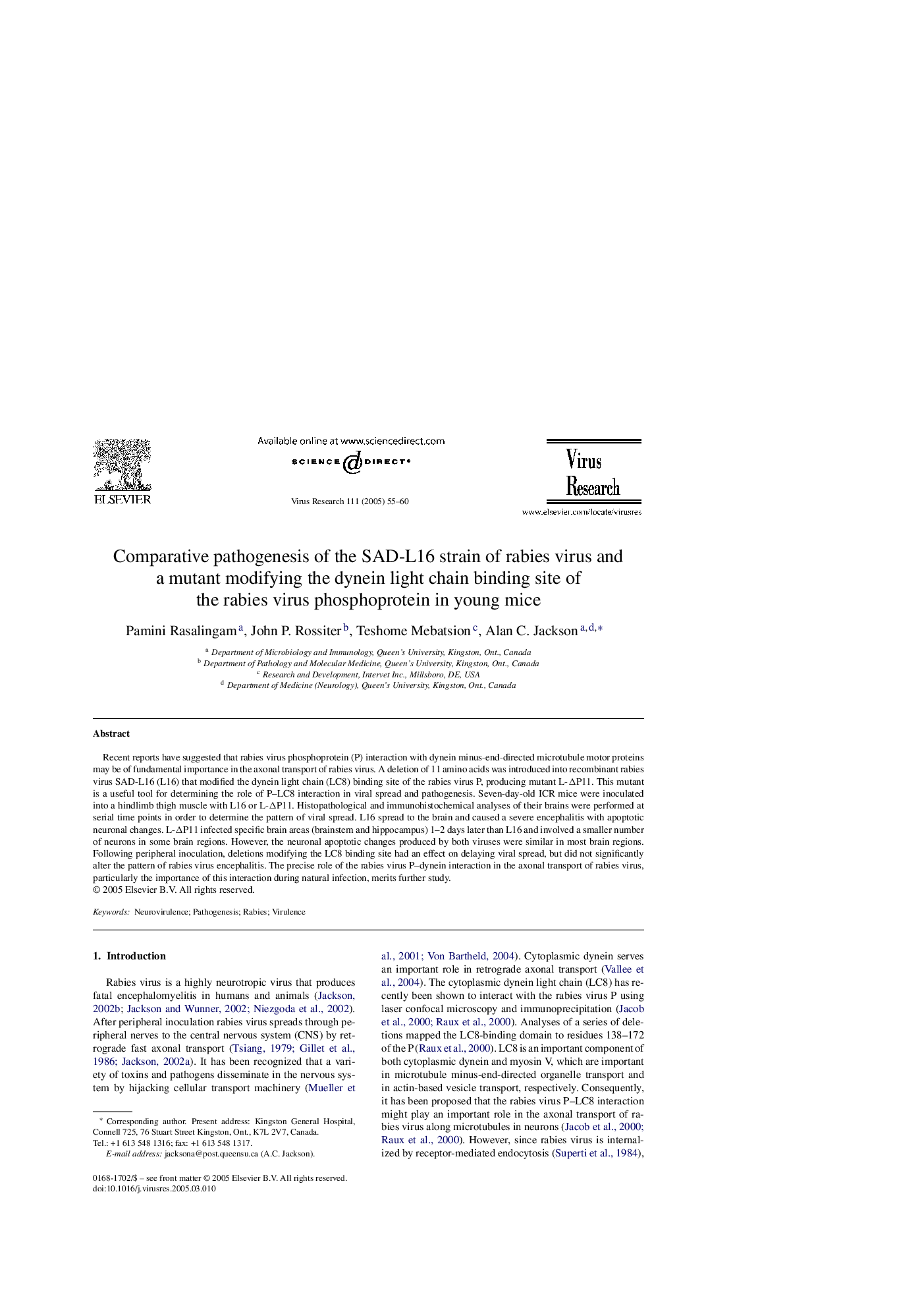| Article ID | Journal | Published Year | Pages | File Type |
|---|---|---|---|---|
| 9289358 | Virus Research | 2005 | 6 Pages |
Abstract
Recent reports have suggested that rabies virus phosphoprotein (P) interaction with dynein minus-end-directed microtubule motor proteins may be of fundamental importance in the axonal transport of rabies virus. A deletion of 11 amino acids was introduced into recombinant rabies virus SAD-L16 (L16) that modified the dynein light chain (LC8) binding site of the rabies virus P, producing mutant L-ÎP11. This mutant is a useful tool for determining the role of P-LC8 interaction in viral spread and pathogenesis. Seven-day-old ICR mice were inoculated into a hindlimb thigh muscle with L16 or L-ÎP11. Histopathological and immunohistochemical analyses of their brains were performed at serial time points in order to determine the pattern of viral spread. L16 spread to the brain and caused a severe encephalitis with apoptotic neuronal changes. L-ÎP11 infected specific brain areas (brainstem and hippocampus) 1-2 days later than L16 and involved a smaller number of neurons in some brain regions. However, the neuronal apoptotic changes produced by both viruses were similar in most brain regions. Following peripheral inoculation, deletions modifying the LC8 binding site had an effect on delaying viral spread, but did not significantly alter the pattern of rabies virus encephalitis. The precise role of the rabies virus P-dynein interaction in the axonal transport of rabies virus, particularly the importance of this interaction during natural infection, merits further study.
Related Topics
Life Sciences
Immunology and Microbiology
Virology
Authors
Pamini Rasalingam, John P. Rossiter, Teshome Mebatsion, Alan C. Jackson,
